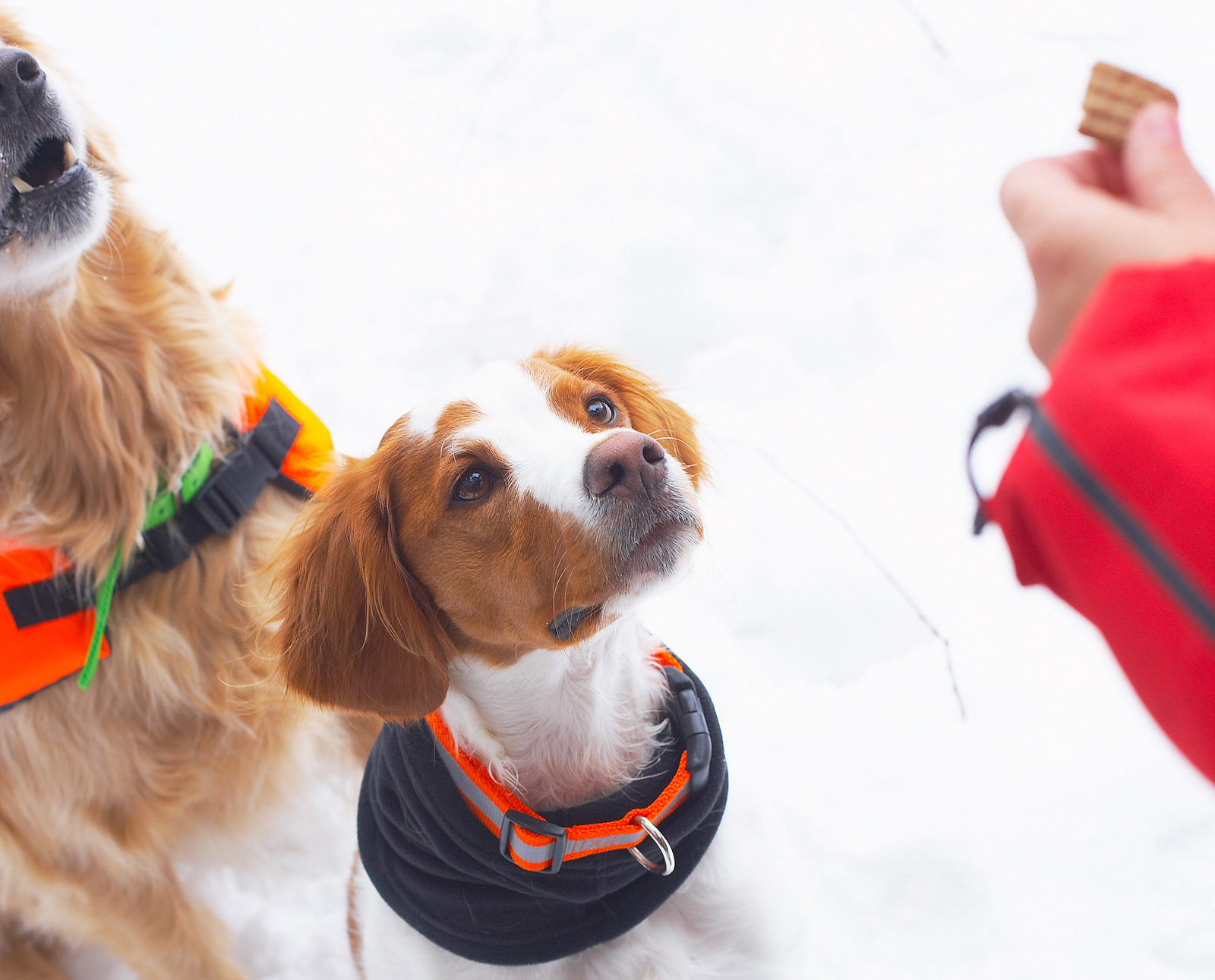What are safe and healthy treats for my pet?

How many treats are ok?
Too many treats (more than 10% of your pet’s daily caloric intake) can add lots of unnecessary kcals (which means kilocalories – the same as Calories on a human nutrition label), nutritionally unbalance the diet, and could be harmful if your pet has a medical condition. Rawhides, though popular, are about 100 kcal per palm-sized piece and some chew bones can be over 1,000 kcal! Considering your average Labrador retriever only needs 1,000 kcal per day, these treats can quickly add up and unbalance the diet. Even those tiny cat treats can end up being a large portion of kcal for a small cat. While some treats are ok, you don’t want too many kcal coming from treats, which are not intended to be nutritionally balanced.
Check the label of your commercial treat for kcal amounts, but if it doesn’t have kcal on the label, then you will need to call the company or check out their website. We don’t recommend feeding any treats from companies that can’t (or won’t) tell you the nutrition information for their products.
What treats are harmful for my pet?
Bones and rawhides can cause stomach upset or obstruction. Recently, a study by our own Dr. Lisa Freeman found that bully sticks (bull penis) contained many more kcal than people think and contained potentially harmful bacteria. Other treats that may be healthy for humans can be toxic and cause disease in pets. For example, garlic and onions can cause blood problems, grapes can cause kidney disease, and chocolate can even be fatal! You can check out the ASPCA website for a list of all the toxic foods you should never feed your pet (http://www.aspca.org).
What are healthy chews for my pet?
We recommend owners use crunchy vegetables as chews or purchase a dehydrator to make at-home vegetable dry chews. You can also use a portion of your pet’s regular food in a special ‘treat’ bag or give out as treats throughout the day. Kibble can be put into dispensing toys that require your pet to ‘earn’ their meals and treats and provide enrichment. For those pets that need to chew, homemade chicken broth or canned food can be placed inside a rubber toy and frozen for pets to chew as it melts. If your pet has a medical condition, be sure to talk to your veterinarian about appropriate treats that will help to manage his or her condition.
Vegetable Treat Options with a Crunch:
- Carrot, 1 medium: 25 Kcal
- Half Cucumber: 20 Kcal
- Celery Stalk: 7 Kcal
- Half Zucchini: 20 Kcal*
*some cats love the semi-moist texture of zucchini as treats!
Want to read more information on feeding your pet?
Subscribe to always know when we add new material!
Recommended Posts

The Most Popular Holiday Foods…That Your Pet Should Avoid!
December 08, 2023

Stalk About Nutritious: It’s Corn!
September 19, 2023


